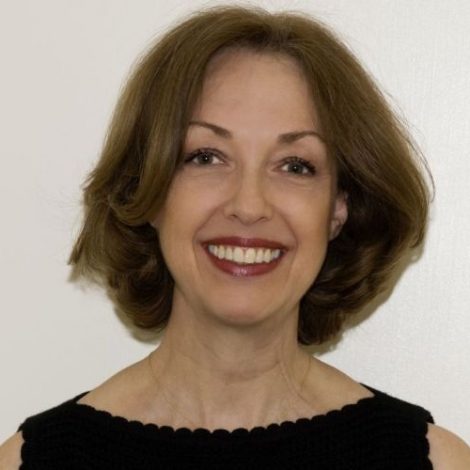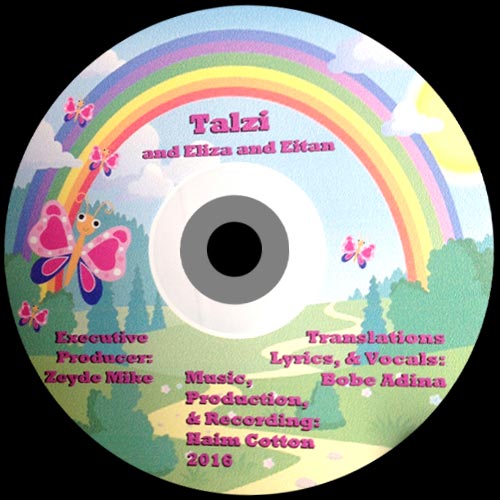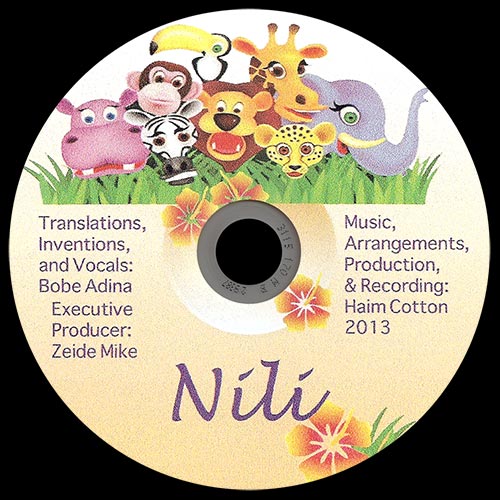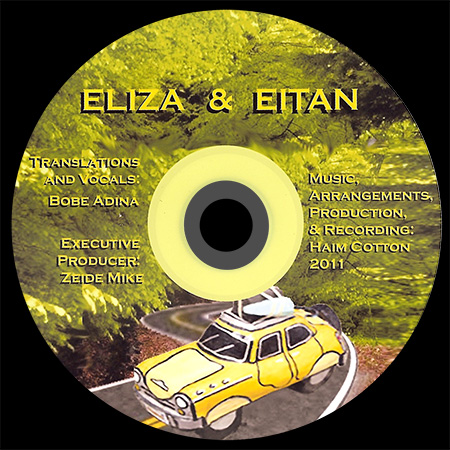(born in Mexico City in 1951) – a sociologist, coopereted with YIVO Institute for Jewish Research in New York. Adina Cimet was born in Mexico City in a family with Polish roots. Her father Ruben Cimet (1923-2008), a well-known sculptor, architect, and professor of architecture in UNAM , was born in Hrubieszów; her mother Shoshana Ralsky Tartak (born in Kaunas, Lithuania) is a survivor of the Holocaust, and was liberated in Bergen Belsen; she is professor of sociology at the National University of Mexico, and author of books on the Mexican political system.
Adina Cimet received her Licenciatura in Sociology at UNAM (Universidad Nacional Autónoma de México) in 1974 with a study on Meritocracy in Higher Education; her MA., MPhil. (1979) and PhD (1992) are from Columbia University in New York. Her dissertation was on The Ashkenazi Community in Mexico: A Dialogue Among Ideologies, 1912-1990. From this material Dr. Cimet published a book, Ashkenazi Jews in Mexico: Ideologies in the Structuring of a Community, SUNY Press.
She is a member of the advisory boards at the Judaic Studies Program of Drexel University in Philadelphia, and from the Forward Newspaper in New York. She has published her work in English, Spanish and Hebrew and has lectured and conducted seminars in various countries.
Dr. Cimet is the author of the Educational Project for Yiddish Culture, and was the Director of the web site When These Streets Heard Yiddish, all sponsored by the YIVO Institute for Jewish Research in New York. The project, originally conceived for Jewish youth but later on expanded to be offered to American Youth and elsewhere as well, focuses on Yiddish culture in Eastern Europe. The project was tested and implemented in 18 pilot schools, 15 in the US, two in Israel and one in Mexico City.
Academic career
Adina Cimet received her Licenciatura in Sociology at UNAM (Universidad Nacional Autónoma de México) in 1974 with a study on Meritocracy in Higher Education; her MA., MPhil. (1979) and PhD (1992) are from Columbia University in New York. Her dissertation was on The Ashkenazi Community in Mexico: A Dialogue Among Ideologies, 1912-1990. From this material Dr. Cimet published a book,Ashkenazi Jews in Mexico: Ideologies in the Structuring of a Community, SUNY Press.
She is a member of the advisory boards at the Judaic Studies Program of Drexel University in Philadelphia, and from the Forward Newspaper in New York. She has published her work in English, Spanish and Hebrew and has lectured and conducted seminars in various countries.
Dr. Cimet is the author of the Educational Project for Yiddish Culture, and was the Director of the web site When These Streets Heard Yiddish, all sponsored by the YIVO Institute for Jewish Research in New York. The project, originally conceived for Jewish youth but later on expanded to be offered to American Youth and elsewhere as well, focuses on Yiddish culture in Eastern Europe. The project was tested and implemented in 18 pilot schools, 15 in the US, two in Israel and one in Mexico City.
Adina Cimet and Lublin
Cimet choses the city and region of Lublin as a paradigm to teach about the life and culture of Jews in Eastern Europe before World War II. Lublin becomes the prism through which she teaches about history, culture, life styles and language of the Yiddish-speaking Ashkenazi Jewry. Her research covers from the beginning of Jewish settlement in Poland and Lublin, specifically (13th c.), until the Holocaust. Not only does she focus on the unique economic and political roles that the central Lublin played for the Jewish community at large in the early centuries of the their settlement, but she illustrates the cultural effervescence that Jews lived with in the inter war period when Lublin was not anymore a hub of economic and political power.
The EPYC project
The original project was prepared at the YIVO Institute for Jewish Research in New York, an institute founded in 1925 in Vilnius, that relocated its treasures to New York as it attempted to escaped the fate of Jewish destruction impossed on all during WWII. Already then the most important research centre devoted to the study of Yiddish language, literature and culture, it continues its mission as an archive and research centre for higher learning.
The Educational Program on Yiddish Culture (EPYC), elaborated at the YIVO by Adina Cimet and her team, is an educational tool kit that includes two level curricula attempting to familiarize students with the Yiddish-speaking Jewish culture that flourished throughout Eastern Europe for 500 years until the Holocaust, a perspective she suggests is essential to be able to understand modern Jewish history.
Word War II brought on the destruction of millions of European Jews and the demise of Ashkenazi culture. After the war, the Yiddish language no longer served as “the language of the street” in all the scattered communities where Jews settled; in Israel, Hebrew was to become the renewed, central, national language of communication. Yiddish today, is used in Chassidic communities, and by pockets of Ashkenazim world wide, as well as by students of its literature and history. So, the cultural background that grew out of these lands continues to be relevant in all aspects of Jewish life today. The challenge is to make that clear to the new generations. For all students, Jews and others, this history and its cultural production is relevant as it challenges today past history, past actions, and highlights the importance of joint coexistence between groups. Old threats to that form of living need to be analysed and maintained conscious if one is hoping to reject prejudicial formulas that surface and reign sporadically.
The EPYC package was designed as a “travelling library”, with material for teachers and students. It makes available various educational resources, it offers background material on the history of the region for teachers, and provides a classroom-ready case study of the Jewish community of Lublin for detailed study. The package includes two distinct curriculum manuals with lesson plans, and, a CD with music and poetry in Yiddish. The EPYC program also developed a supplementary website “When These Streets Heard Yiddish”, a multimedia companion tool to the texts, that should enable teachers and students to get acquainted with a wide sample of places and cultural facets of the Yiddish culture of Eastern European Jews, offering along the way an assortment of maps, a historical time line, and many other materials that allow the visitor to explore archival photographs, short essays and music, at their own pace.
Adina Cimet’s project, and her Cultural Monograph of Jewish Lublin specifically, play an important role presenting Lublin as one of the major Jewish centres in Eastern Europe. Throughout the centuries the Jewish community of Lublin contributed with many important institutions for Jewish life: as a legal and learning centre symbolically represented by the ( today lost) Great Synagogue (the Maharshal Shul), the early Hebrew printing houses, as well as the imposing 20th century Chachmei Lublin Yeshiva. Lublin was the home of the Vaad Arba Aratzot (The Council of Four Lands) that oversaw the autonomy of the Jewish minority at the time of the Polish Empire. Later on, important Chassidic rebbes ( i.e. The Seer of Lublin) were visited in this city; and in modern times, secular Yiddish culture shined in the work of great Jewish writers that sprung up from these lands. Works of a number of Yiddish poets and writers are connected with Lublin or were inspired by the city and its symbolism, of which perhaps the best known are Isaac Bashevis Singer and Jacob Glatstein. Lublin had writers, theatre, choruses, folklore, and visitors from all over who came to pay a visit and tribute to the great old centre.
36 Songs Performed by Adina Cimet
-
A Ketzl2:12
-
A Mayzl2:12
-
A Pastekhl in Shpanie2:45
-
A shprits vaser1:28
-
Bombonkes2:25
-
Broytale2:33
-
Der soykher1:59
-
Di Shpin2:15
-
Di Yashtcherke Di Grine3:03
-
Di kale1:13
-
Di lyalke2:30
-
Di shisl un dos tepl3:05
-
Dray kleyne hintlekh2:38
-
Eitan un Eliza1:51
-
Elizale1:33
-
Esterketeke1:56
-
Fayerlesher - mayzalakh1:47
-
Ferdalakh2:08
-
Flaterl--Medley3:41
-
Hamerl1:19
-
Kukuriku Mame-Hindl2:34
-
Litvish Lidl1:41
-
Malpes Mit Tzeklapte Kep2:18
-
Mame-katshke1:38
-
Mayn Eizale3:01
-
Nili1:20
-
Ovntbroyt1:45
-
Oy2:15
-
Patshe1:40
-
Popugayke fort avek1:51
-
Regn1:54
-
Taybale: Chonita2:53
-
Telefon2:40
-
Tzigl1:45
-
Vander-foygl2:48
-
Vig Lid4:12





